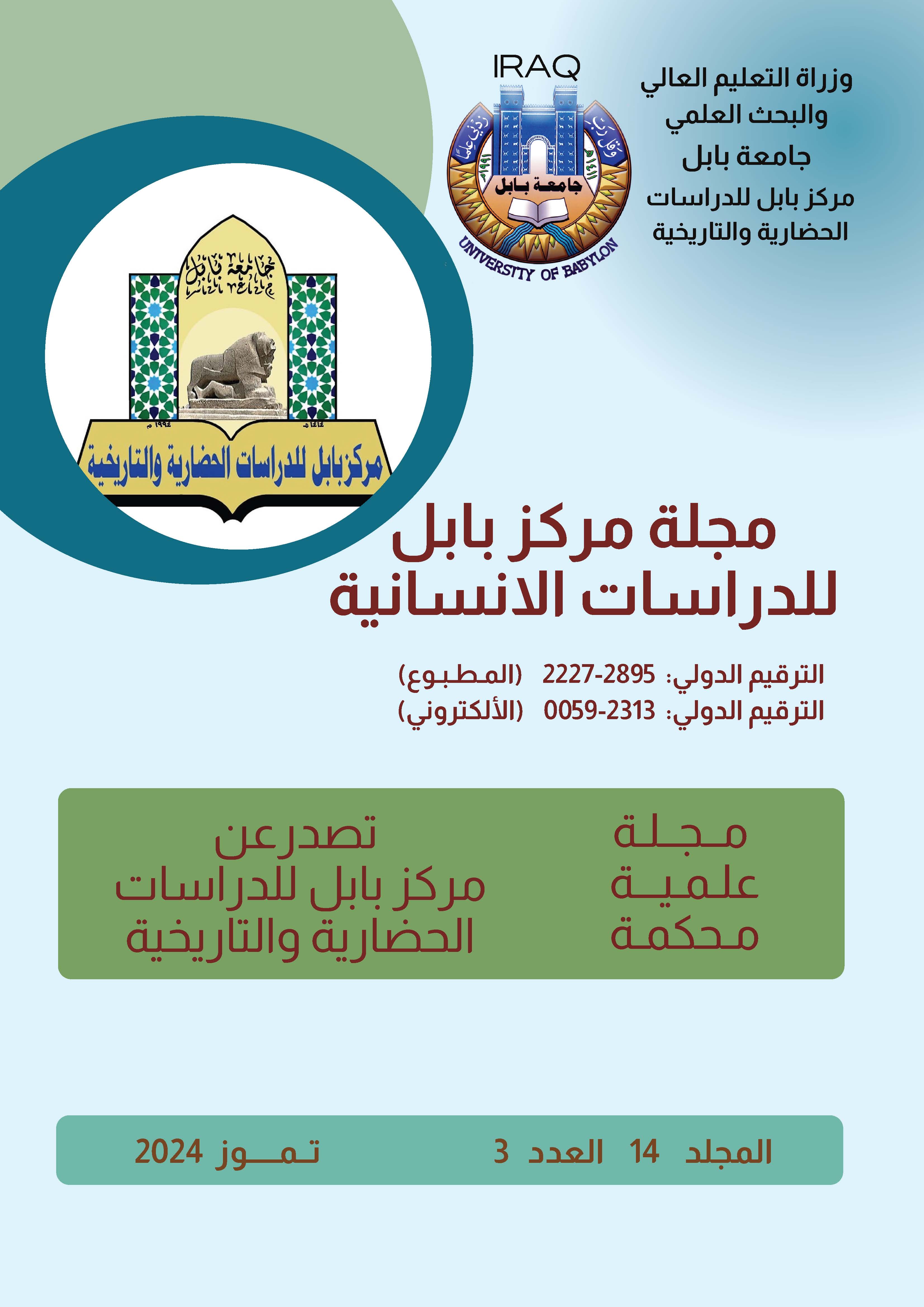Internal conflicts between the Phalange Party and its military wing )Lebanese Forces) 1991-1993
Keywords:
Geagea, the Brigades, conflict, disputes, elections, militiasAbstract
The length of the Lebanese civil war, which began in 1975 and officially ended in 1990, was considered the longest civil war in the twentieth century and had a negative impact on the Lebanese people on the social, economic, political and demographic levels. These negative effects were directly reflected on the Lebanese people in general and on the souls of the Lebanese militia leaders in particular, who began to think about how to obtain political gains in the Lebanese government, because they had come to represent the Lebanese sects, which led them to put their personal interests ahead of the interests of the members of their sect, and among this was The conflict that began within the sect itself is the conflict between the members of the Maronite Christian sect, between the Lebanese Phalange Party and its military wing, the Lebanese Forces. The Phalange Party was the strongest representative of the Christian community in the Lebanese government, and they had a wide popular base inside and outside Lebanon. In addition, it received support at the international level, but the emergence of militia leaders in the Lebanese Forces, the military wing of the Lebanese Phalange Party, who had a role in the fighting throughout the war. In the political arena, they began to view the political leaders in the Lebanese Phalange Party as caring about their personal interests without caring about them. This had a great impact on the hearts of the leaders of the Lebanese Forces, and Samir Geagea led this conflict. He became the leader of the Lebanese Forces and began to rebel against the decisions of the Phalange Party and even the Lebanese government. This led to an increase in tension and clashes between the Lebanese Christian militias among themselves, and this tension and clash led to... The opportunity for the Lebanese Forces, the military wing of the Lebanese Phalange Party, to appear on the Lebanese scene in a large and effective way to lead the Christian Resolution Movement, and after the end of the civil war after the Taif Agreement in the Kingdom of Saudi Arabia and the formation of the Lebanese government headed by Elias Hrawi The differences between the Lebanese Forces and the Phalange Party appeared when a decision was issued to dissolve all Lebanese militias. Geagea was able to benefit from the decision to dissolve the militias by the Lebanese government and transform the Lebanese Forces into a political party in 1991, as Geagea, the leader of the Lebanese Forces, wanted to be unique in the Christian political decision, and indeed He was able to impose his control over the Christian community and prevent them from participating in the 1992 elections Which had a negative impact on the Lebanese Forces Party and the Lebanese Phalange Party, in response to the behavior of Samir Geagea and the Lebanese Forces Party, opened channels of communication with the Syrian regime, which deepened differences and renewed conflicts with the Lebanese Forces, which led the leaders of the Lebanese Forces to commit major crimes against the Lebanese people, including killing Bombing and blackmail And others, which ended with the arrest of Geagea and some leaders of the Lebanese Forces, ending their role in prisons in 1993 to be tried after that.







